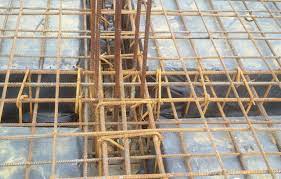Beam and slab construction is a popular building technique that involves the use of reinforced concrete beams and slabs to create a structural framework. This type of construction is commonly used in residential and commercial buildings, as well as bridges and other infrastructure projects. Here is everything you need to know about beam and slab construction.
What is Beam and Slab Construction?
Beam and slab construction is a structural system that consists of reinforced concrete beams and slabs. The beams and slabs are designed to work together to support the weight of the building or structure. The beams are supported by columns or walls, and the slabs are supported by the beams.
The design of the beams and slabs depends on the specific building or structure being constructed. The size, thickness, and placement of the beams and slabs are all carefully calculated to ensure that the structure is strong, stable, and able to withstand the weight of the building or structure.
Advantages of Beam and Slab Construction
Beam and slab construction offers several advantages over other construction techniques. These advantages include:
- Strength and Durability: Reinforced concrete beams and slabs are incredibly strong and durable, making them ideal for supporting heavy loads and withstanding the test of time.
- Flexibility: Beam and slab construction can customize to meet the specific needs of a building or structure. The size, thickness, and placement of the beams and slabs can adjust to accommodate different design requirements.
- Cost-Effective: Beams and slab construction is a cost-effective building technique, as it uses fewer materials than other construction methods.
- Speed: Beams and slab construction can complete quickly and efficiently, making it an ideal choice for fast-track construction projects.
- Aesthetics: Beams and slab construction can create a clean and modern look for a building or structure, as the beams and slabs often left expose to create an industrial or architectural aesthetic.
Disadvantages of Beam and Slab Construction
Beam and slab construction also have some disadvantages, including:
- Complexity: Beam and slab construction requires a high level of skill and expertise, as it involves the use of advanced engineering and construction techniques.
- Height Limitations: Beam and slab construction not well-suited for tall buildings, as the weight of the structure can become too heavy to support the beams and slabs.
- Maintenance: Reinforced concrete structures require regular maintenance to prevent deterioration and ensure their longevity.
How to Construct a Beam and Slab Building
The process of constructing a beam and slab building involves several steps, including:
- Planning and Design: The first step in constructing a beam and slab building is to create a detailed plan and design for the structure. This includes determining the size and layout of the building, as well as the placement and thickness of the beams and slabs.
- Excavation and Foundation: The site must excavat and prepared for the foundation of the building. The foundation typically made of reinforced concrete and designed to provide a stable base for the beams and slabs.
- Column and Beam Construction: The columns and beams construct next, using reinforced concrete. The columns space throughout the building to support the weight of the beams and slabs.
- Slab Construction: Once the columns and beams are in place, the slabs construct using reinforced concrete. The slabs place on top of the beams and designed to support the weight of the building.
- Finishing: Once the structural components of the building are in place, the finishing work can begin. This includes installing insulation, electrical and plumbing systems, and interior finishes such as drywall, flooring, and paint.
In summary, beams and slab construction is a popular building technique that uses reinforced concrete beams. And slabs to create a strong and durable structural framework. While it requires a high level of skill and expertise, beams and slab construction offers several advantages over other construction techniques. Including strength, flexibility, cost-effectiveness, speed, and aesthetics.

